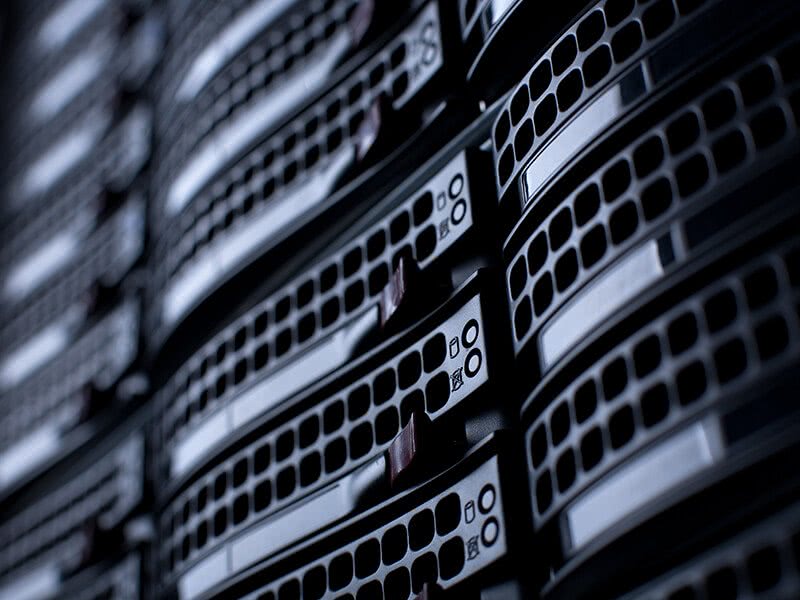Data proliferation and application sprawl means edge-of-network computing locations will need to triple – or more – by 2025. One in five participants in Vertiv’s Data Center 2025 survey said they expect a 400% or more increase in the number of edge sites they will be supporting in the next five years. How can companies support and sustain that massive and uncertain future growth?
In the webinar, Data Center 2025: How to Prepare for Massive Growth at the Edge, Martin Olsen, Vice President, Global Edge and Integrated Solutions for Vertiv, and Dave Hybels, Director, Global Analyst Relations for Vertiv, discussed how companies could prepare for challenges related to implementing an edge-of-network strategy.
The data center industry is in a state of unprecedented change: technology is evolving at breakneck speed, data centers are becoming increasingly distributed and dynamic, and 5G is on the horizon. More data is being generated and consumed than ever before, and frequently that is happening at the network edge.
Of the participants in Vertiv’s 2019 Data Center 2025 survey who have edge sites today or expect to have edge sites in 2025, more than half (53%) expect the number of edge sites they support to grow by at least 100% with 20% expecting a 400% or more increase. Collectively, survey participants expect their total number of edge computing sites will grow 226% between now and 2025.
Furthermore, the industry is overwhelmingly optimistic about the 5G business outlook and is moving forward aggressively with deployment plans. Twelve percent of operators expect to roll out 5G services in 2019 (451 Research 5G Telecom Report). The implementation of 5G technology is driving the need for edge-of-network locations and bringing with it some challenges, like significantly increased energy use.
Business can and should prepare for expected growth now.
- EFFICIENTLY ADD COMPUTE CAPACITY IN NEW LOCATIONS
- MECs (multi-access edge computing sites) are a popular way to address putting compute capacity in new places. Eighty-percent of respondents globally are deploying or intend to use MEC infrastructure ahead of their 5G rollouts.
- MECs (multi-access edge computing sites) are a popular way to address putting compute capacity in new places. Eighty-percent of respondents globally are deploying or intend to use MEC infrastructure ahead of their 5G rollouts.
- CHOOSE SITE LOCATIONS STRATEGICALLY
- Consider government requirements in terms of site selection. Companies will need to deploy IT in places the industry has not previously considered. They may encounter environmental issues such as physical access, temperature, moisture, security, etc. There may be restrictions on data transport for privacy and security reasons where the raw data has significant value and therefore poses a security risk.
- Consider government requirements in terms of site selection. Companies will need to deploy IT in places the industry has not previously considered. They may encounter environmental issues such as physical access, temperature, moisture, security, etc. There may be restrictions on data transport for privacy and security reasons where the raw data has significant value and therefore poses a security risk.
- TAILOR AVAILABILITY TO SERVICE REQUIREMENTS
- Not all edge locations and not all racks within an edge location will be supporting applications that demand maximum availability. Redundancy in the network itself and condition-based, predictive-maintenance could allow a rack-based protection approach, eliminate overprovisioning of UPS capacity, and reduce Capex requirements.
- Not all edge locations and not all racks within an edge location will be supporting applications that demand maximum availability. Redundancy in the network itself and condition-based, predictive-maintenance could allow a rack-based protection approach, eliminate overprovisioning of UPS capacity, and reduce Capex requirements.
- MITIGATE HIGHER ENERGY CONSUMPTION WITH ECONIMIZATION
- With energy use expected to skyrocket with the 5G rollout and because many edge sites will be supporting 5G, mitigating increased energy use is a priority. In 5 years, 73 percent of respondents plan to use cooling economization technologies vs. 43 percent today.
- With energy use expected to skyrocket with the 5G rollout and because many edge sites will be supporting 5G, mitigating increased energy use is a priority. In 5 years, 73 percent of respondents plan to use cooling economization technologies vs. 43 percent today.
- MITIGATE HIGHER ENERGY CONSUMPTION WITH UPDATED BATTERIES
- Due to the increased efficiency of Lithium-Ion batteries, 81 percent of respondents are moving away from VRLA batteries over the next five years.
- Due to the increased efficiency of Lithium-Ion batteries, 81 percent of respondents are moving away from VRLA batteries over the next five years.
- ENSURE INFRASTRUCTURE SCALABILITY WHILE MINIMIZING CAPEX
- Provisioning now for the infrastructure systems needed to support 5G in 5 to 6 years is not practical. The key will be specifying and deploying modular and integrated infrastructure solutions to scale capacity with minimal disruption.
- Provisioning now for the infrastructure systems needed to support 5G in 5 to 6 years is not practical. The key will be specifying and deploying modular and integrated infrastructure solutions to scale capacity with minimal disruption.
- ENABLE REMOTE MANAGEMENT
- As new computing comes on-line, the ability to remotely monitor and manage these locations will be increasingly important. While security concerns have stunted remote monitoring's adoption in the past, the sheer quantity of expected disparate sites will make it a necessity. An ideal monitoring system provides a dashboard that allows operators visibility without deploying service technicians to the site.
- Concurrently with dramatic changes in technology, a transformation in the workplace is occurring. One-third of data center professionals in the U.S. plan to retire by 2025. Enabling remote management capabilities will help to increase the productivity of a reduced workforce.





